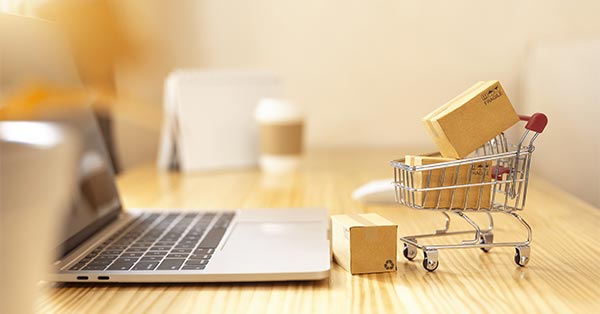What spreads faster than coronavirus? No, it’s not a joke – but it is cause for concern. Fear and uncertainty have spread across the globe, seemingly faster than the virus itself. Stock markets worldwide have lost trillions of dollars. Business confidence indexes for numerous economies are tumbling as manufacturing and supply chain issues climb. It’s a perfect storm of unfavorable conditions that has hit businesses hard. It’s not doomsday, though, and companies aren’t helpless.
Macroeconomic influences outside of your control will always exist. What you can control, however, is how to react to those influences. So, how can you identify the strategic opportunities, ensure business continuity while weathering the storm, and prepare for the more positive days ahead?
Analyse what’s already happened


As explained further in a recent article from Harvard Business Review, China already appears to be seeing the early stages of an economic rebound. Some notable actions that Chinese companies swiftly took during the coronavirus crisis included:
Reallocation of resources. Employees are the lifeblood of the organization and have a wealth of knowledge and experience about the business. Instead of laying off valuable resources, many companies chose to reallocate them to recovery planning and strategic, forward-looking activities.
Clever use of social media. With physical store visits declining and customers staying indoors, Cosmo Lady, a Chinese lingerie company, chose to divert promotional efforts to social media channels. The company cleverly leveraged the social connections of its employees to bump up sales. Employees used channels such as WeChat to promote the company’s products and became part of a company-wide sales ranking initiative to motivate staff to participate.
Strong, top-down management focused on keeping employees informed on a regular, timely basis. Early media reports about COVID-19 in China contained confusing and often contradictory information. Several Chinese companies, however, implemented specific operational guidelines and instructions on preventative measures and emergency plans. Those companies’ top-level management quickly disseminated updates and information to staff to keep uncertainty and worry minimized.
“Coronavirus has hit the economy hard – both locally and internationally – and it’s a perfect storm for which recovery efforts may take considerable time. The knock-on effects from the virus have already taken their toll on global economic growth with manufacturing seeing its worst contraction since 2009.”
Set up the infrastructure to work remotely


What do employees need to work from home effectively?
Equipment and environment
A laptop is the obvious piece of equipment that staff need to work from home. But what about the working environment? When you’re working an 8-hour day outside of the office, you also need to consider equipment such as a desk, chair, the speed of your internet connection, whether you need a telephone headset, webcam or printer. You’ll also want to set up a space that’s quiet, has adequate lighting, and that minimises distractions.
You also need a safe environment to carry out your work duties. As part of the work-from-home policy of some forward-thinking workplaces, employees need to confirm they have an OH&S compliant space to work. Policies may also include a checklist to outline the requirements for an appropriate “home office” working environment. When employees know how to create a safe working environment for themselves, they can be at their most effective.
Technology
The latest laptop and the ultimate office chair are nice – but ultimately useless without the technology to support the work from home concept. We used to live in a world where all business software was all run from local server-based applications. Some companies are still managing with on-premise software – and in these cases, you might need a VPN or a physical RSA token to access your internal business systems. A large number of companies have proactively made the move to cloud-based applications that provide a secure connection – without additional measures. Outlook 365, Asana, Xero, and even full end-to-end business management software, like the NetSuite ERP system, are cloud applications that can be accessed at any time, from anywhere.
Guidance
A major corporation based in Sydney recently provided its employees with a series of communications on everything from “what to do if you feel ill” to corporate travel considerations. These comms also give clear detail on how to access email, phone lines, and specific business applications should employees need to work from home at short notice. Workers are also instructed to take laptops with them each day to enable working from home at a moment’s notice. This level of guidance helps employees feel prepared and minimizes disruption if they need to change their normal working environment at any time.
“The current contagion fears have also caused face-to-face meetings to all but disappear from sight. As customers shy away from physical meetings, having the tools and know-how to conduct virtual meetings becomes crucial to business continuity.”
Increase your digital capability


The tumultuous landscape formed around physical events highlights the need to be digitally-capable. A company that can run web-based events stands a real chance of retaining and expanding its audience – whereas those without experience in the digital events space will need to catch up quickly to stay in the race.
The current contagion fears have also caused face-to-face meetings to all but disappear from sight. As customers shy away from physical meetings, having the tools and know-how to conduct virtual meetings becomes crucial to business continuity.
Connect with your customers


One way to combat uncertainty is to provide clarity. Your customers will understandably have questions. Will they experience delayed lead times? Should they expect more virtual meetings with your company for the immediate future? Whether or not your company is suffering from the crisis, clarifying the state of your operations to customers is a positive action.
Consider how communications with customers are happening now and look for opportunities to centralise and make key messaging consistent. If your account managers, customer service reps, and other staff are communicating with customers about business impacts or knock-on effects of COVID-19, are those comms being checked for accuracy? Are they keeping with your company brand and messaging?
It’s a good idea to involve marketing and other resources that can with accuracy, language, tone, and other crucial factors, and plan out communications proactively.
Setting expectations with your customers upfront and sending the right message can build stronger rapport and create connections that will last much longer than the coronavirus storm.
“As part of the work-from-home policy of some forward-thinking workplaces, employees need to confirm they have an OH&S compliant space to work. Policies may also include a checklist to outline the requirements for an appropriate ‘home office’ working environment. When employees know how to create a safe working environment for themselves, they can be at their most effective.”
Increase the focus on omnichannel


Constant “40-60% off” sale signs in shop windows make the situation seem even more dire. But is it really just a case of mark-downs being the biggest sign of stores not knowing how to respond to increasing competition?
With up to 81% of buyers starting their purchasing journey online, competition is now a fierce, global challenge. If I can buy the same product from an overseas seller on eBay for less than the sale price in a retail store – and there’s no clear point of difference in terms of service or customer experience – I know which option I’ll choose.
So, how can companies make sure the “walk-in” experience results in customers walking out with their products? This is where an omnichannel strategy can create value and convenience. Customers crave convenience right now. If they’re able to purchase a product online with the option to return it in-store, they can potentially save time and hassle compared to the online-only experience.
Many customers also want a tangible experience. They want to see a product, pick it up, and evaluate the quality for themselves. The problem is that customers can then go online and purchase from a competitor. Cross-channel coupons and promotions are just one way to help retain your customer after they leave the store.
A CRM system that holds important data about your customers can also bring crucial context to conversations – whether in-store, over the phone, or online. Imagine your customer service team taking a product enquiry call, armed with context from the onset. Your customer service reps could instantly understand that customer’s buying behavior and preferences. They could make recommendations for complementary products that may also interest those customers, and become more effective upsell resources for your company.
Setting your business up with the right omnichannel presence, and CRM to deliver a better view of customers and their preferences, can set you apart from the ever-growing, global competition – and put you a step ahead when your competitors, and the wider economy, begin recovering after the coronavirus storm passes.
“Setting your business up with the right omnichannel presence, and CRM to deliver a better view of customers and their preferences, can set you apart from the ever-growing, global competition – and put you a step ahead when your competitors, and the wider economy, begin recovering after the coronavirus storm passes.”
Prepare for the bounce-back


What can you learn from other economies that already seen the worst of the crisis? How can you support your employees in working from home if and when they need to? Is business continuity already a standard or could you stand to become more digitally-capable with a stronger omnichannel strategy? Have you built the right foundations with customers through proactive communication to weather the storm together?
Now is the time to identify the opportunities, get strategic, and prepare for the positive bounce-back when the worst of COVID-19 is over. It’s also time to create your own story around business continuity, and take control of the narrative. With the right preparation, it may end up being your business growth that surges faster than expected.
The ability to work from anywhere, at any time is just one reason why forward-thinking companies are rapidly adopting cloud computing. Learn more about cloud computing – including the economic and strategic benefits – with your free business guide.









